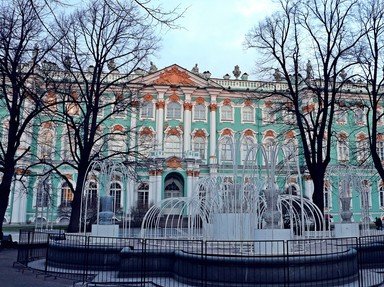Quiz Answer Key and Fun Facts
1. This is one of the two paintings from this artist that were in Catherine's original collection, and you can still see it in the Hermitage. What Italian painter of the High Renaissance painted 'Madonna with Beardless St. Joseph'?
2. This is one of a series of six paintings by Titian (or artists in his workshop) showing a figure from Greek mythology who was seduced (some might say raped) by Zeus in the form of a shower of gold coins. Who is the subject of this painting?
3. The list of paintings acquired by Catherine the Great included one by the older brother of a painter often identified as "the Younger", to distinguish him from his artist father. The creator of this painting had a first name of Ambrosius. What was his surname?
4. This painting by the Venetian artist Paolo Caliari (known as Paolo Veronese, because he was born in Verona) is titled 'Pietà', a common theme in religious paintings. This lets us know that the subject matter is the death of what man?
5. Catherine's purchase included 13 paintings from the hand of the Flemish artist who painted this 'Madonna and Child'. Which of these was it?
6. What is the title of this painting from Frans Hals which was part of Catherine's collection?
7. This painting by the Flemish artist Jacob Jordaens is one of seven that Catherine acquired for her collection. Did Jordaens follow the usual practice of the time, spending several years living in Italy to master his craft?
8. This is a self-portrait that was part of Catherine's collection, one of five paintings from the same Flemish artist who was knighted by King Charles I of England. Which of these is portrayed?
9. Rembrandt van Rijn was responsible for 13 paintings in Catherine' collection. Which one of them is shown here?
10. This painting, titled 'The Idlers', was painted by a Dutch artist known for the humour he instils in many of his paintings. Which of these created 'The Idlers'?
Source: Author
looney_tunes
This quiz was reviewed by FunTrivia editor
ponycargirl before going online.
Any errors found in FunTrivia content are routinely corrected through our feedback system.
